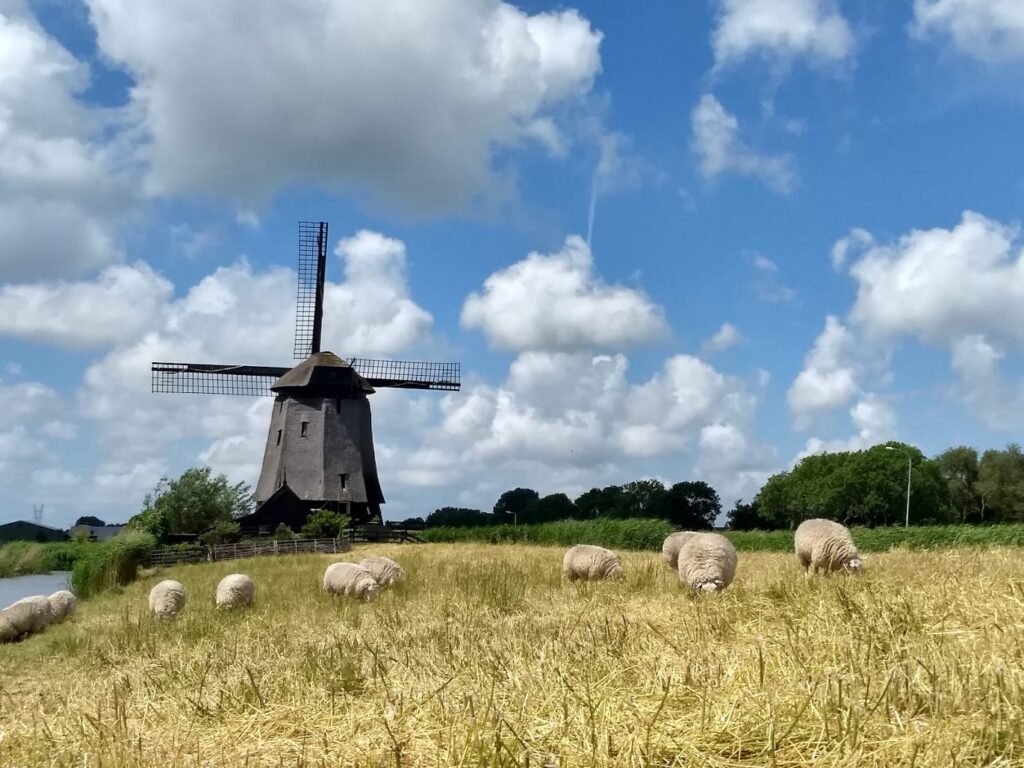How do Dutch windmills work?
Incredibly well and improved for hundreds of years although now they are really just kept to preserve Dutch heritage. You don’t get more quintessentially Dutch than a windmill but like many typically Dutch things they come from somewhere else!
Think about it, the Dutch are famous for tulips that originated in Asia and came here via Turkey. They are famous for the fries, Belgian fries as it happens. They are famous for ‘pancakes’ which are really crepes, sounds a bit French to me! So yeah, windmills are typically Dutch but actually came from… Persia/Iran.
It has to be admitted though that the Dutch did take windmills and run with them, applying the technology to uses other than milling and advancing them to an amazing degree. Windmills are a perfect example of the famous Dutch talent of adding value and quality through innovation.
Windmills for milling
Windmills were initially used for milling, hence ‘mills’. A large round heavy stone is turned by the wind powered wings and grinds against another stationary stone beneath it. The grain or corn is fed between the stones and ground into flour. It’s dusty work, you definitely wouldn’t want to live in a flour grinding mill. This style of mill could grind all sorts of things from grains and seeds to tobacco to limestone to make concrete,
With a bit of tinkering here and there mills were adapted to extract the oil from seeds, basically by crushing them and then pounding them, this is how linseed oil for paint was extracted in the Dutch Golden Age.
Windmills for sawing
A phenomenal innovation was when an inspired farmer invented the crank shaft. Imagine a horizontal spinning beam. Now imagine if there were ‘U’ shapes in that beam and it was still spinning. Now the bottom part of the ‘U’ would make a bigger circle. If a long pole was attached to the bottom of the ‘U’ and had a saw blade attached to the bottom of it, that spinning motion has now become a vertical motion. Voila, a saw mill. Now instead of 2 people sweating away sawing by hand for days, a tree could be sliced into perfect planks in a matter of hours. This was one of the building blocks that gave the Dutch shipbuilding such an advantage in the 1600s.
Windmills for pumping water
Of course it was using windmills to pump water that was such a hugely important part of life here in the soggy Netherlands. Initially windmills lifted water using a paddle wheel. That was ok but inefficient and the water could only be lifted about 1.5 metres. Someone got the idea of attaching an Archimedean screw to a windmill and using that to pump water. The result was amazing, water could be pumped higher and faster. The windmill we visit on our Amsterdam Windmill Tour is one of the first in North Holland to be fitted with one of these screws and in peak conditions it pumps 1000 litres of water a second! That’s 264 US Gallons by the way, a second!
All windmills need to face the wind to work and also need the sails on the wings adjusted to suit the wind speed. With industrial mills, this can happen when they next start work. With water pumping mills however, if there is too much water, it needs to be pumped immediately. So it was essential to have someone on duty 24/7. The water pumping mills were a whole lot quieter than the industrial mills so convenient for living in. There was plenty of space as they are actually pretty simple in their construction with not that many moving parts. So these mills were often also homes to the millers. This is pretty great for visiting now as you get to not only see the mill in operation but also how people of the period lived in these lovely old structures.
On both our Amsterdam Windmill Tour and our Keukenhof Tulip Tour, you can see and learn about windmills in depth. On the windmill tour, we we visit an almost 400 year old mill with an Archimedean screw, that’s the windmill in the video above. We get to explore inside, and see all the working parts of the mill with its huge spinning wheels and shafts. Down on the first floor the interior is restored to how the miller would have lived there in centuries past. And when the wind is blowing, which is most of the time here in Holland, we get to see this old beauty pumping water as it has done for hundreds of years.

